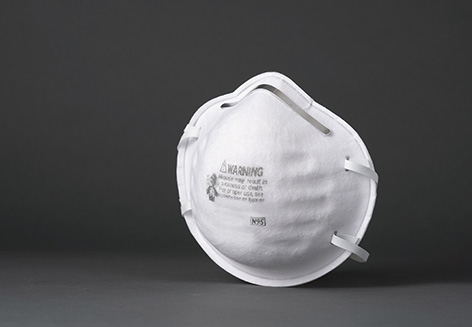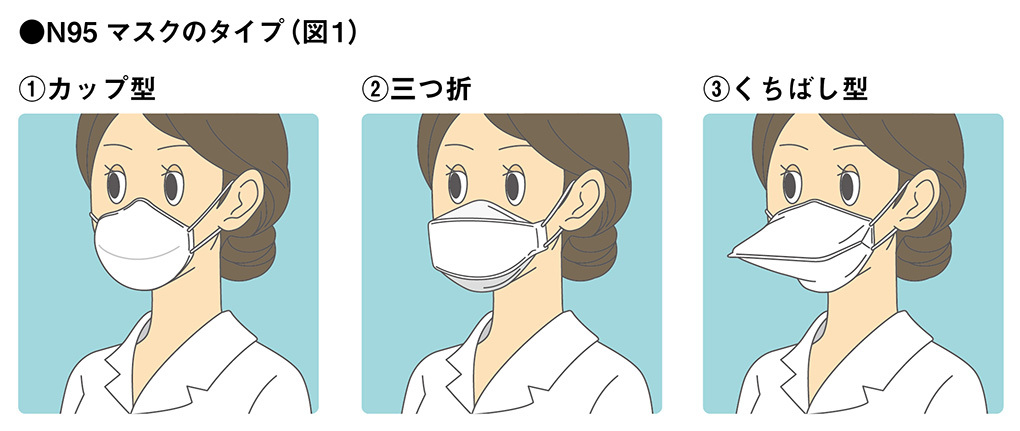ASOURCE®NAVI

公開日:2021.07.02
新型コロナウイルスは、接触のほか感染者の口や鼻から出て空気中に浮遊するウイルスを含んだ微粒子「エアロゾル」によって感染するリスクの高いことが知られており、コロナの医療現場では医療スタッフを守るためにN95マスクが広く使われています。ただし、N95マスクは質が高くても、正しく装着されていなければ感染を防げません。適正に使用するための方法について考えてみます。
N95規格とは米国労働安全衛生研究所が制定した呼吸器防護具の規格基準です。Nは「耐油性なし」を表しています。95とは直径0.3μm以上の塩化ナトリウムの捕集効率が95%以上を意味します。すなわち、N95マスクは、直径5μm以下の飛沫核に付着した病原体を捕集でき、着用者の肺への侵入を防ぐことが可能となっています。直径5μm以下で空気感染が懸念される病原体としては、結核菌、麻疹、水痘ウイルスなどが知られています。
厚労省によれば、コロナ診療場面でのN95マスクの使用は「エアロゾルが発生するような手技を行う時」(気管内吸引、気管内挿管、下気道検体採取など)に推奨されています。
N95マスクの使用にあたっては正しい装着をする必要があります。N95マスクには大きく分けてカップ型、3つ折型、くちばし型があり(図1)、自身の顔型にフィットしたN95マスクを選択することが重要です。

マスクが正しく装着されているかどうかを調べる方法の1つに定性的なフィットテストがあります(図2)。このテストでは、マスクサイズの不適合や装着の不完全さによる漏れを判定でき、医療現場でのスタッフの安全を確保するために有効です。米国では年に1度のフィットテストの実施が義務化されています。
フィットテストはまず、N95マスクを適切に装着します(図1)。その状態でフードを被り、サッカリンなど味を感知できるものをエアロゾル化しフード内に噴霧します。そして深呼吸、顔を上下左右に動かす、大きく口を開けて発声する、を行います。いずれかの動作において味を感知した場合にはN95マスクと顔の間に隙間があると考え、フィットしないことになります。
フィットテストは自分の顔にマスクが合うかどうかをみていますが、実際に装着がうまく行われているかどうかについてはユーザーシールチェックという方法を装着ごとに行う必要があります。これは、装着する度にマスクの適正な密閉を確認するものです。具体的には、両手でマスクを完全に覆うようにしてゆっくり息を吐きます(図3)。その際にN95マスクと顔の間から空気が漏れているように感じられれば密閉性が十分でないことがわかります。再度マスクの位置を修正して行い、ゴム紐の調整を行います。

日本は海外に比べてN95マスクの着用にあたってフィットテストやユーザーシールチェックが必要であるとの認識はまだ十分に浸透しないのが現状とされます。教育面も含めて広く普及が望まれます。
メディアスグループは、医療機器の販売を中心とした事業を展開しています。医療に携わる私たち(Medical+us)は、医療現場や人々の健康的な明日へ役立つ情報をお届けする情報発信源(Media)の役割も果たしていきたいと考えています。